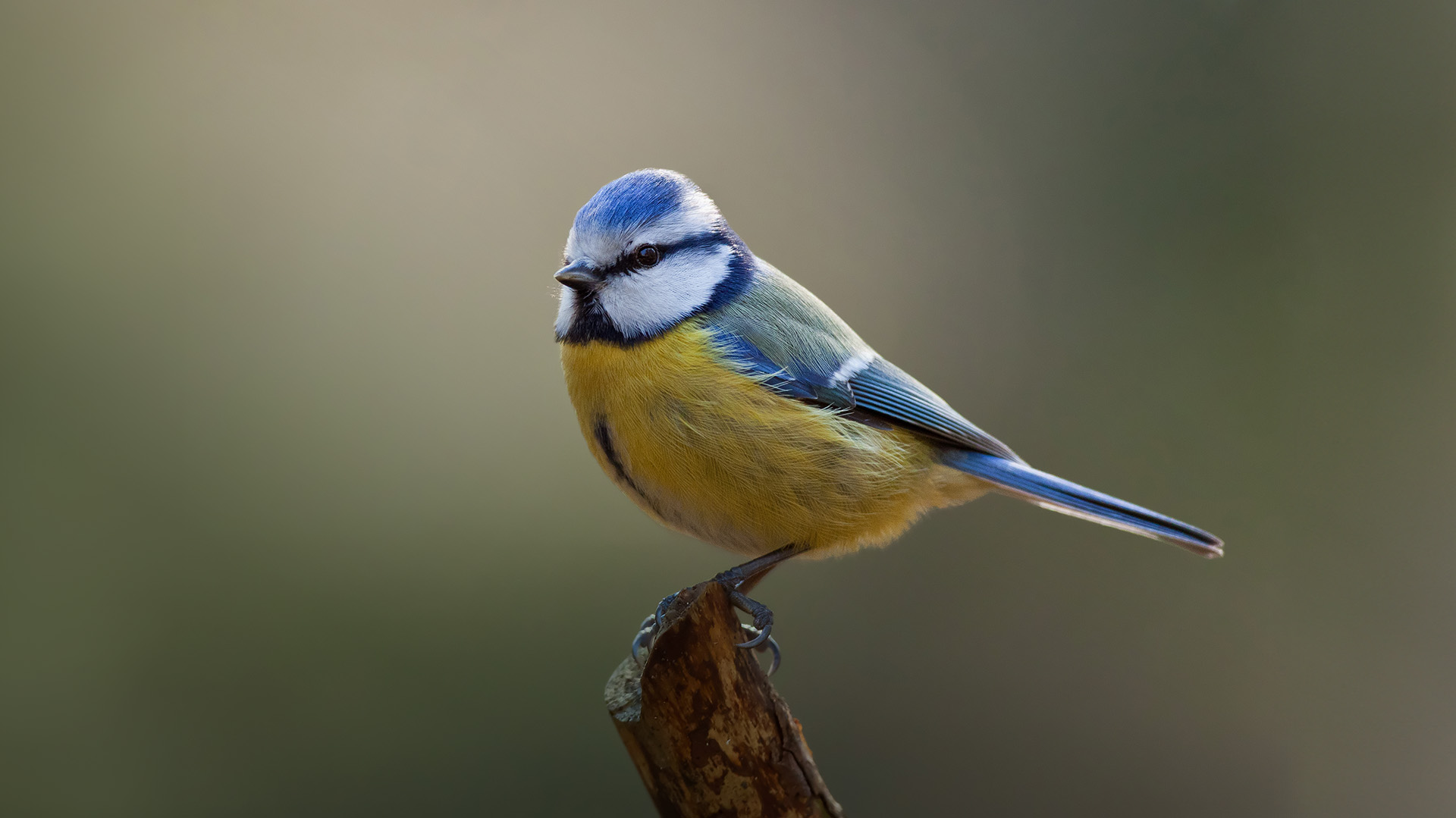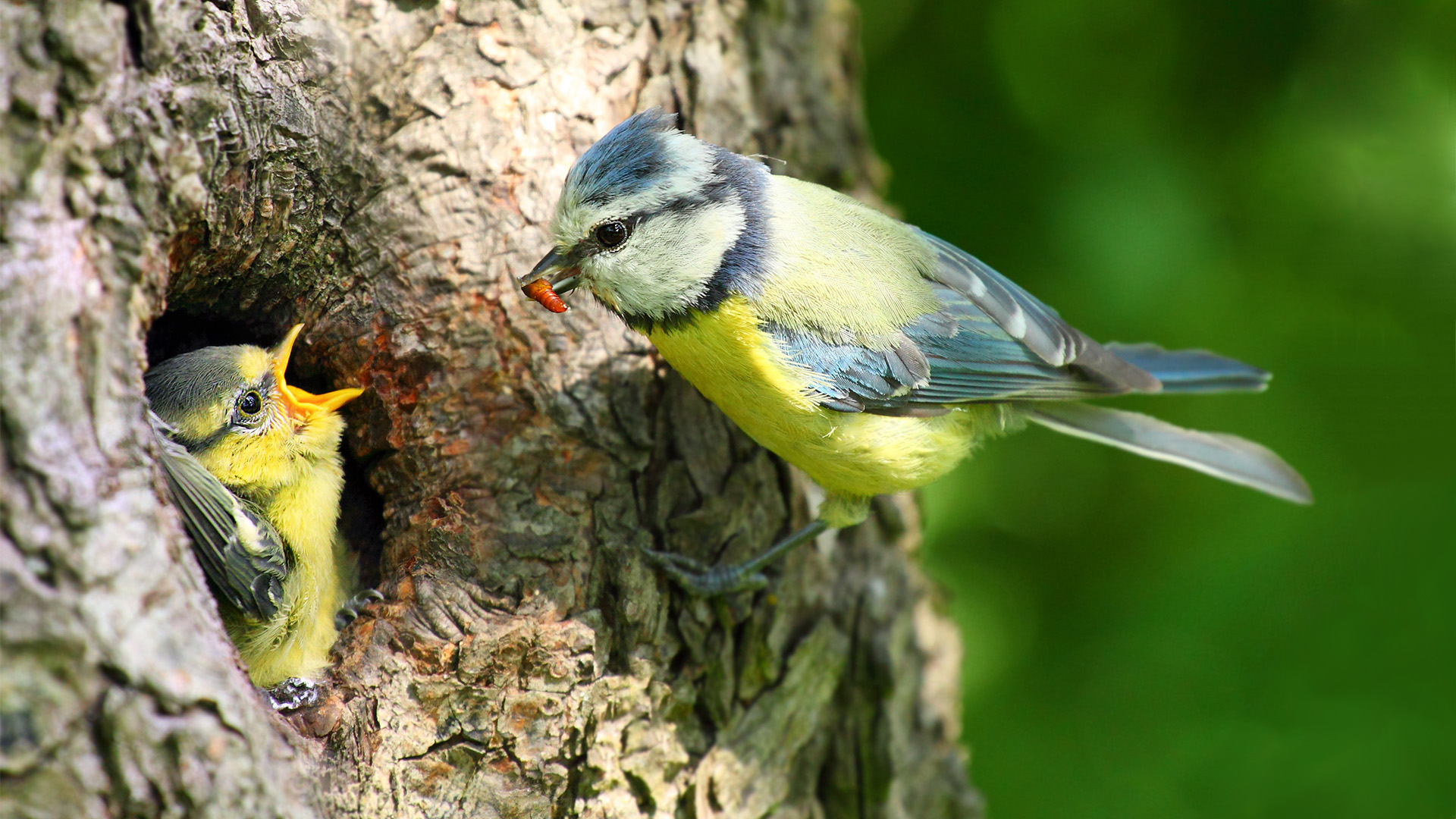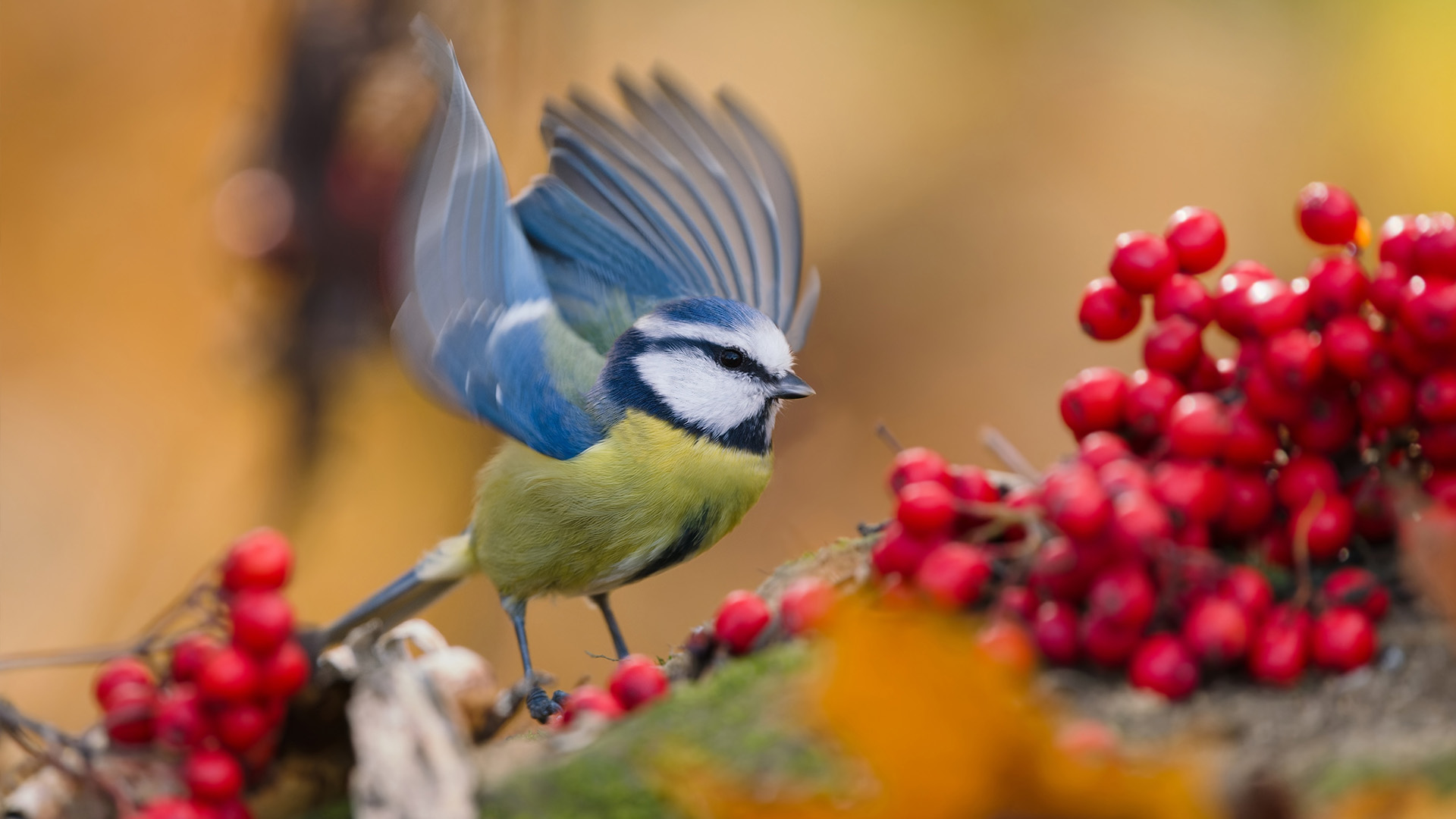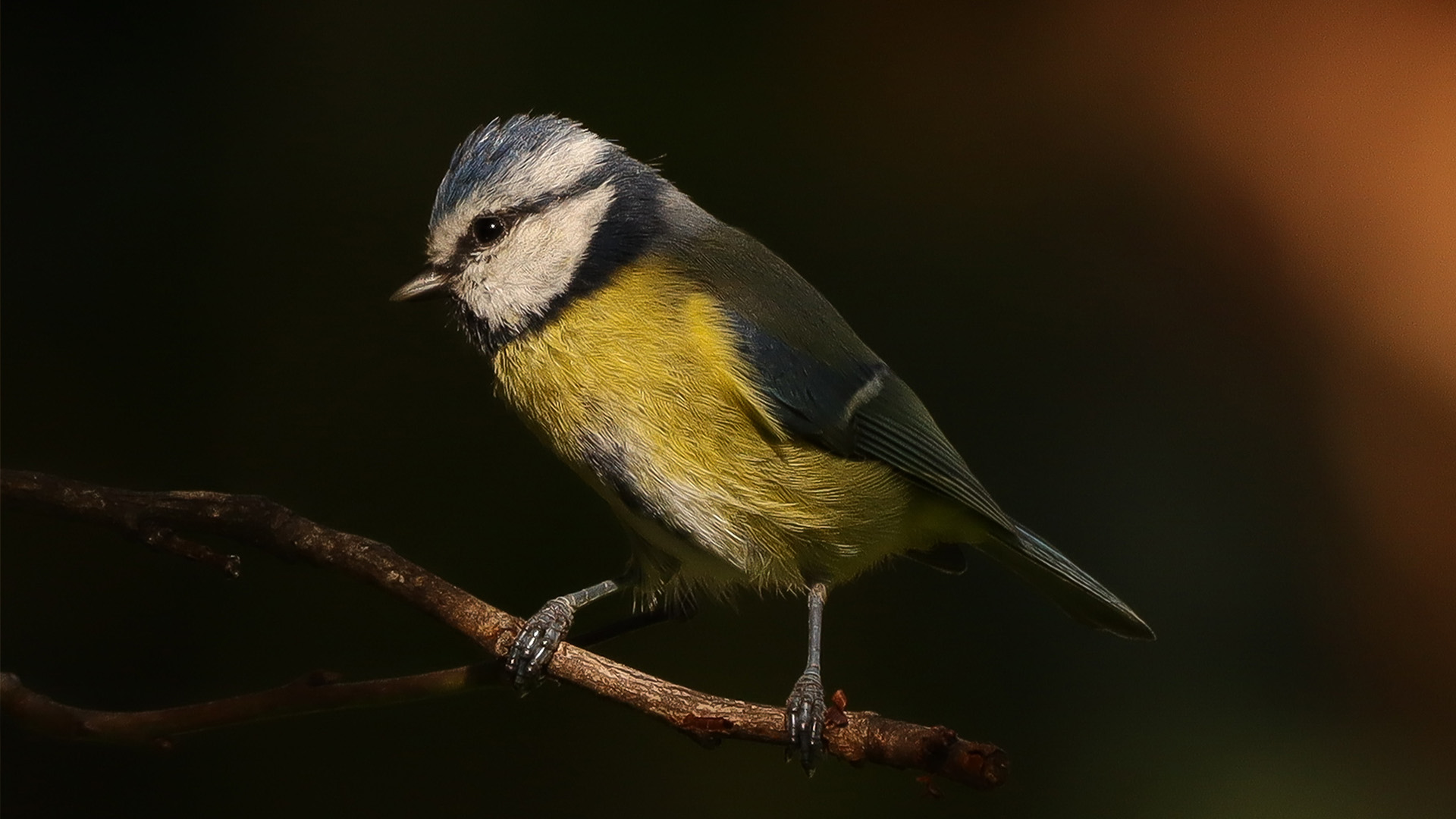Small in size but easily identifiable given its lush colours, the Eurasian blue tit (Cyanistes caeruleus) is one of the most emblematic birds in the Portuguese avifauna. This bird from the Paridae family is fearless and restless and moves easily through tree branches looking for insects, its main diet.
Blue tits are about 12 centimetres long, weigh no more than 12 grams on average and stand out for its vibrant plumage. As for their head, it looks like they are wearing a blue cap, in strong contrast with their white face and the thin black line that crosses their eyes, resembling a mask. Their back is olive green, the wings and tail are blue and the chest and belly range from yellow to white. The beak and paws are dark grey. In the Summer, juveniles have yellow cheeks and a greyish-green cap.
Spread throughout Europe to north-west Africa and parts of western Asia, the blue tit can be found in Portugal virtually all over the national territory and prefers forest areas, parks and urban gardens. Oak, pine, and eucalyptus forests, and cork oak forests and locations with old trees, are especially appealing to this species.






